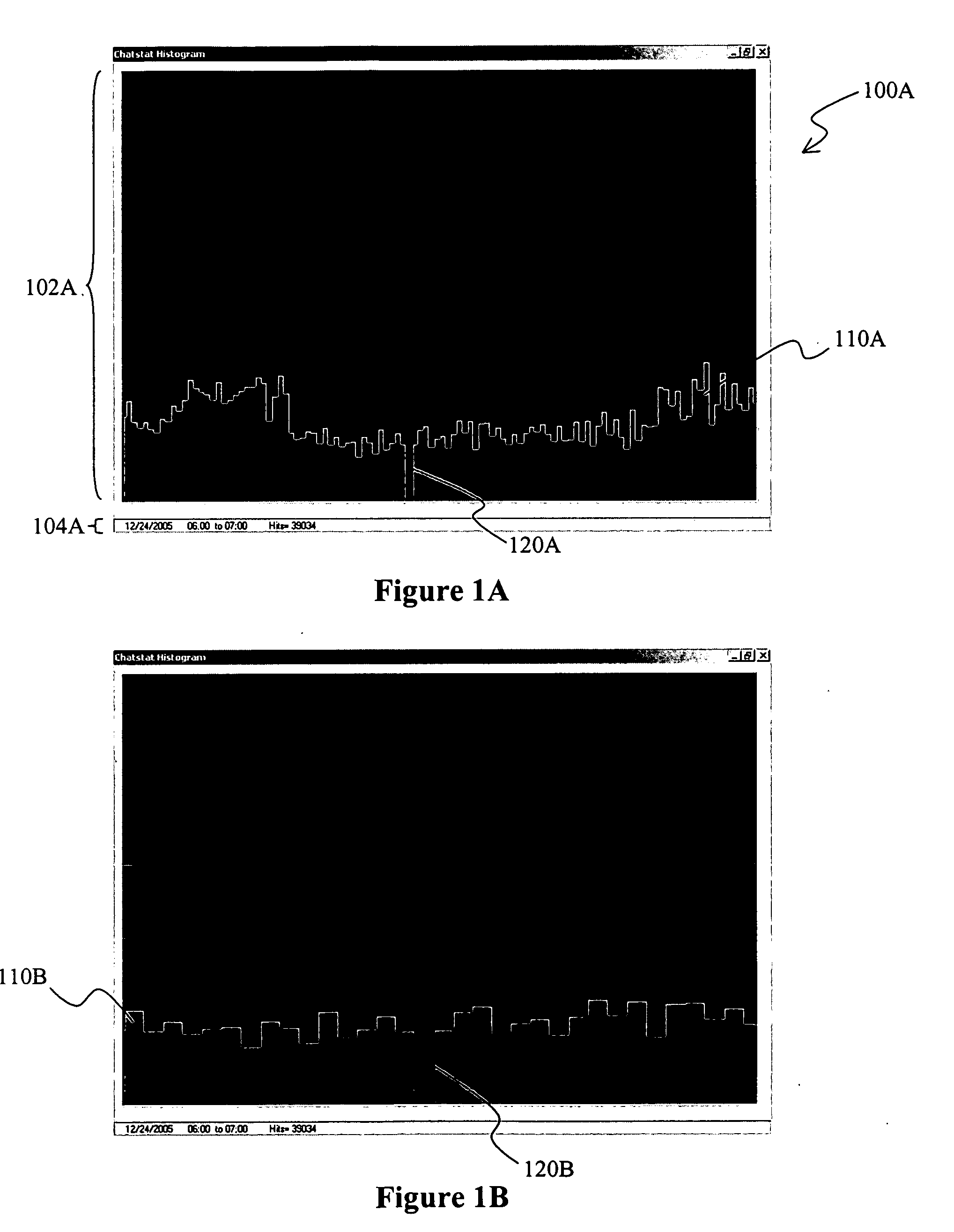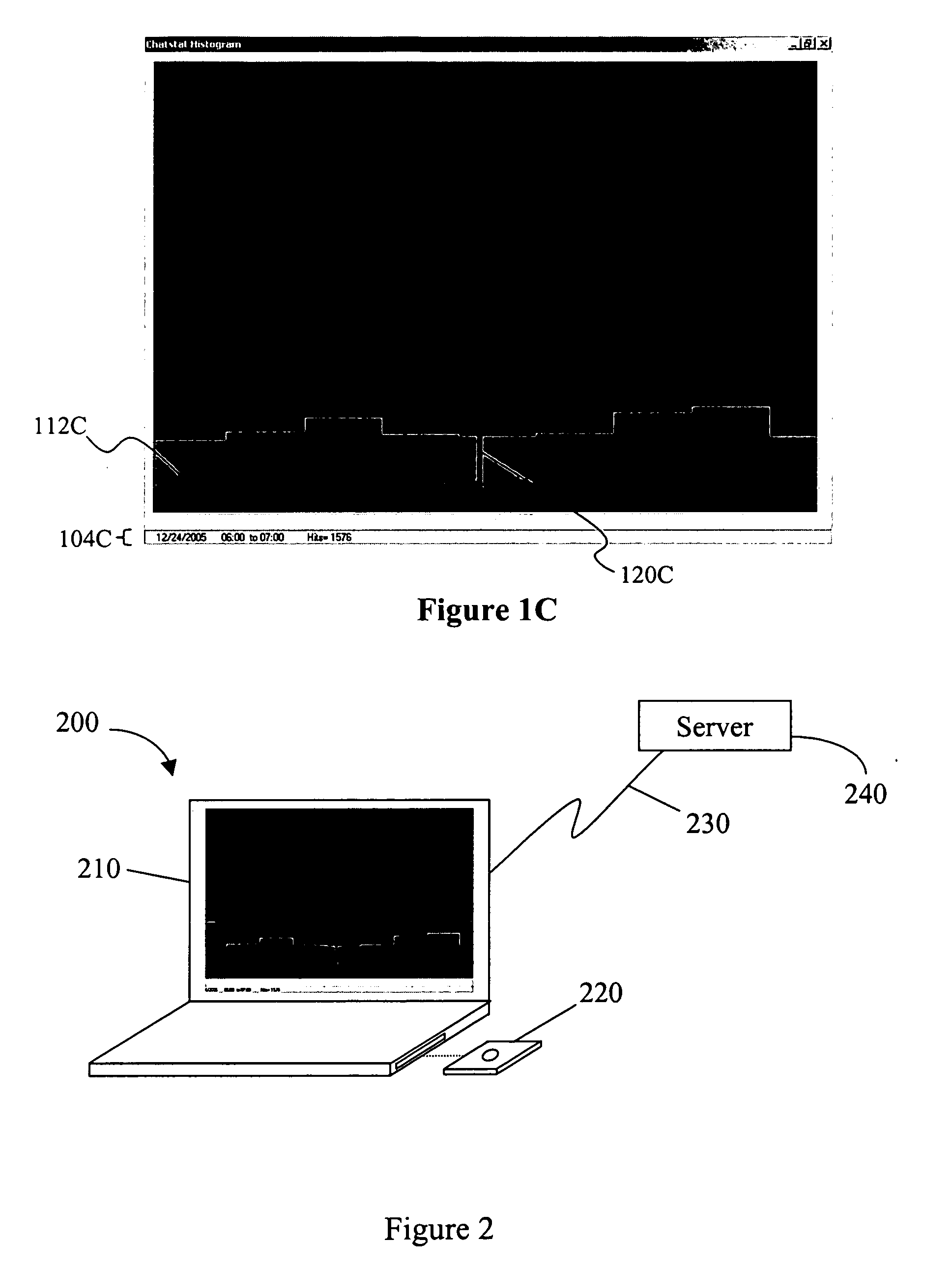Graph with zoom operated clustering functions
- Summary
- Abstract
- Description
- Claims
- Application Information
AI Technical Summary
Benefits of technology
Problems solved by technology
Method used
Image
Examples
Embodiment Construction
[0018]The inventor has discovered that a plurality of data points can be presented in a display in which the data points can be viewed at any given and variable zoom without losing relevant information associated with the data points. Most advantageously, as a user zooms in a graph or other display, a second display is generated and presented in which detail information of the zoomed-in area is displayed as a plurality of data points in a de-clustered manner. Similarly, as a user zooms out of a particular area, individual data points are clustered into appropriate higher level clusters to thereby prevent information overload and generate a meaningful information output. In especially contemplated aspects, the presentation of the data points allows for a continuous zoom-in and zoom-out function as well as for a continuous panning function.
[0019]As used herein, the term “continuous” when used in conjunction with the terms “zoom”, “zooming”, “pan”, or “panning” refers to the manner of ...
PUM
 Login to View More
Login to View More Abstract
Description
Claims
Application Information
 Login to View More
Login to View More - R&D
- Intellectual Property
- Life Sciences
- Materials
- Tech Scout
- Unparalleled Data Quality
- Higher Quality Content
- 60% Fewer Hallucinations
Browse by: Latest US Patents, China's latest patents, Technical Efficacy Thesaurus, Application Domain, Technology Topic, Popular Technical Reports.
© 2025 PatSnap. All rights reserved.Legal|Privacy policy|Modern Slavery Act Transparency Statement|Sitemap|About US| Contact US: help@patsnap.com



